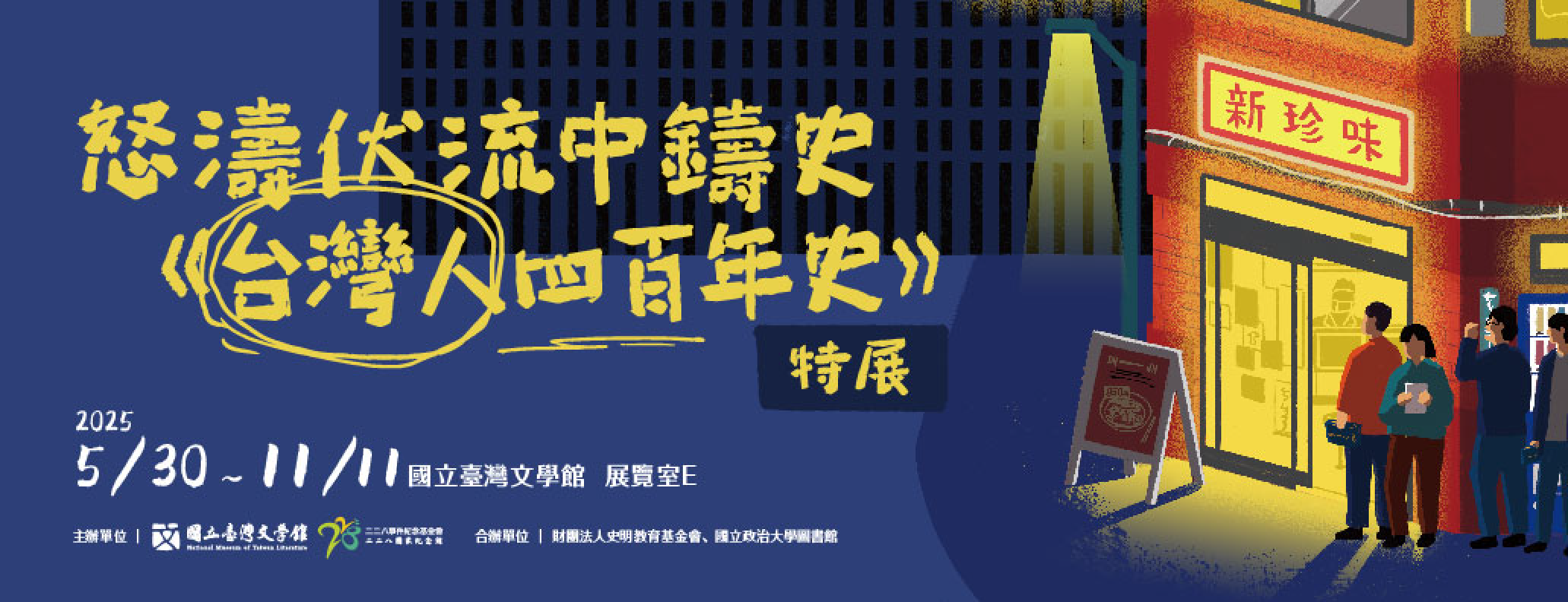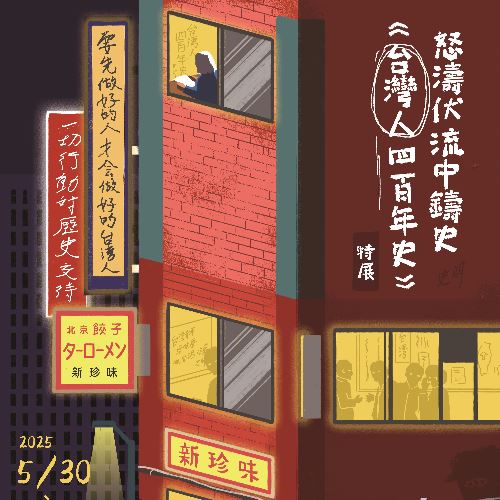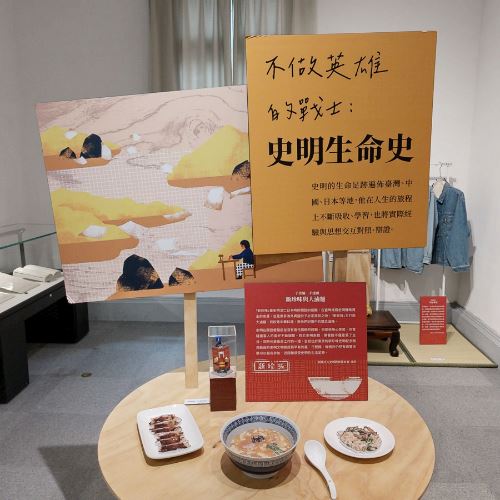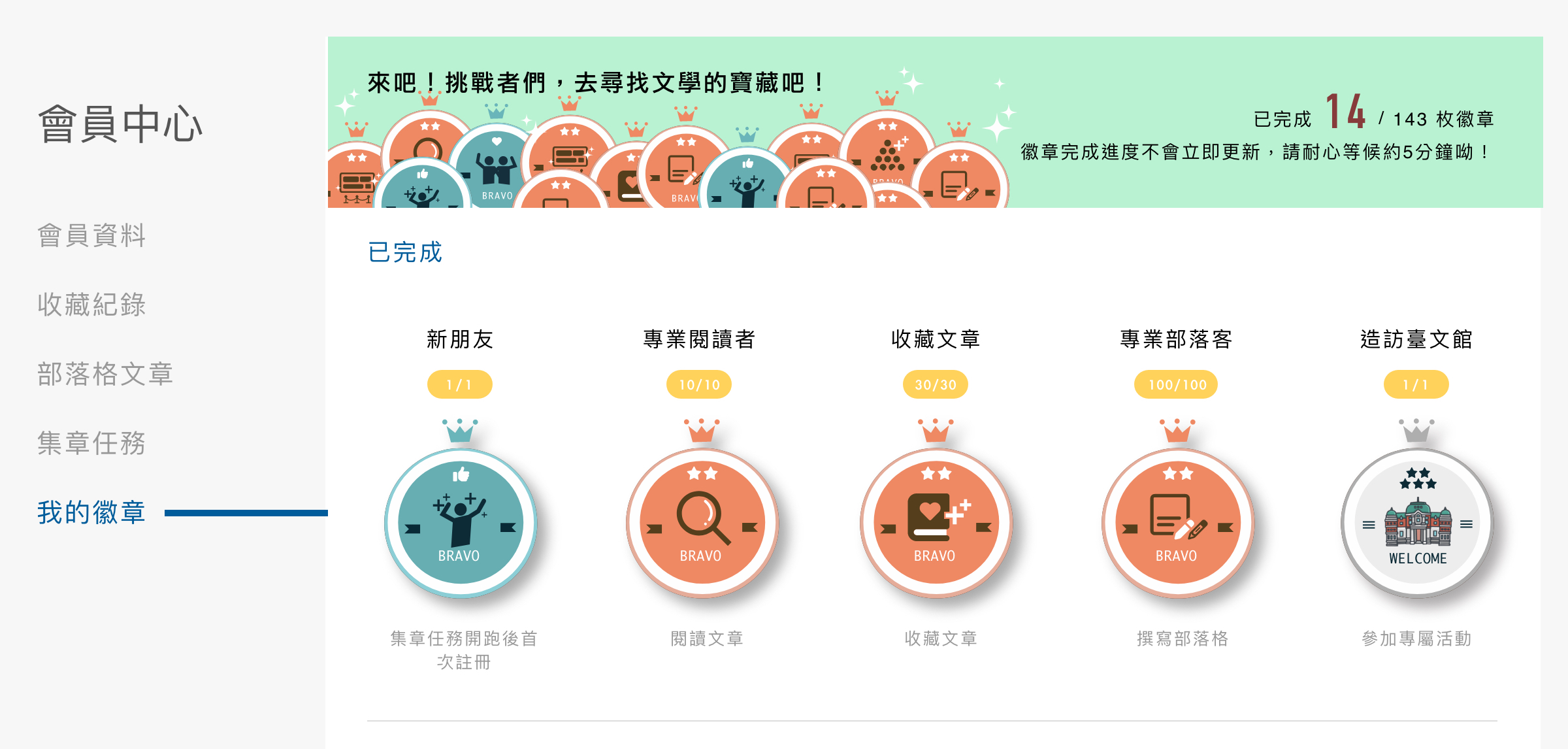Crossing the Red Tide, Highlighting History:
The Birth and Impact of Taiwan's 400 Year History

Taiwan's 400 Year History is a major general history of Taiwan from the postwar era. It was written by Su Beng ( birth name Shih Chao-hui, 1918–2019); the Japanese edition was published in 1962, while the Mandarin edition circulated underground in Taiwan during the 1980s. It awakened Taiwanese consciousness in many people and is an important part of Taiwan’s history worth learning about. The centerpiece of this exhibition is the set of printing flongs of the 1962 Japanese edition of Taiwan's 400 Year History.
Alongside them are multiple versions which Su Beng personally revised and expanded over the years, as well as pirated copies that were photocopied and circulated underground during martial law. Su Beng's goal was to "seek the wellspring of the Taiwanese people's strength, awaken their national consciousness, and recognize the mission that comes with being Taiwanese." These various editions reveal not only the struggles of a nationalist in pursuit of his ideals but also the effort of a colonized people to preserve and reclaim their own history. "One must first be a good human being, and then become a good Taiwanese," is Su Beng's classic saying. He wore many hats throughout his life, becoming a revolutionary, writer, and head chef of a Chinese restaurant.
This exhibition therefore also features a reconstruction of the Shin Chinmi restaurant with food models, and a recreation of the mu-gui device once used to test timed explosives on the fifth floor. Through these everyday objects, visitors can glimpse how Su Beng's thought and action evolved in tandem. The exhibition concludes by highlighting four other writers: Yang Kuei, Lu Ho-jo, Chung I-jen, and Wang Yu-te - whose paths intersected with Su Beng at similar historical moments. Each pursued their ideals in different ways, allowing us to sense how Su Beng and his contemporaries sought to fulfill the responsibility of being Taiwanese.

Taiwan's 400 Year History, Japanese Edition Flongs
Flongs were paper molds used during the movable type printing era to enable rapid and convenient reprinting. Because completed lead type forms were too heavy and unwieldy to store and reuse efficiently, specially made flong paper was laid damp over the lead type and pressed by hand or machine, creating an impression of the characters on the paper. These impressions could later be used to cast flat or cylindrical plates for different printing presses.
This set of flongs for the complete 1962 edition and portions of the 1974 supplement was uncovered in 2023, during the reorganization of the Su Beng Legacy Center at Shin Chinmi, Ikebukuro, Tokyo. Flongs represent the most complete pre-press version of a text, and so this set represents the beginning of Su Beng's historiography of Taiwan and the awakening of Taiwanese consciousness.
Donated by the Su Beng Education Foundation.
1-1 The Challenges of Writing

Su Beng conceived of writing Taiwan's 400 Year History as early as 1950. Through writing, he sought to clarify questions such as "What is Taiwan?" and "Who are the Taiwanese?"
After returning to Taiwan from China in 1949, Su Beng borrowed reference materials from Tsao Yung-han, his fellow townsman in Shilin, and began envisioning a history of Taiwan written from a Taiwanese perspective. However, following the exposure of his revolutionary activities, he went into exile in Japan in 1952. Starting with a street stall and later establishing the Shin Chinmi restaurant, Su Beng earned his living by day and conducted research by night. He frequented the National Diet Library and Waseda University Library in Japan to gather materials. After two years of effort, he published the Japanese edition of Taiwan's 400 Year History in 1962.

Various Editions of Taiwan’s 400 Year History
This case presents different editions of Taiwan’s 400 Year History,
illustrating how this monumental work evolved through turbulent times.
The versions on display include: the 1962 Japanese first edition, the 1974 revised and supplemented Japanese edition,
the 1980 Chinese edition published in the U.S., the 1986 English edition,
the 1988 Taiwan edition authorized for publication and circulation by Cheng Nan-jung, the 1998 expanded Chinese edition,
and the 2014 revised edition. There were also comic and abridged editions,
as well as unofficial photocopied or hand-rebound versions through which many readers accessed the book.
(Provided by the Su Beng Education Foundation)
1-2 Obstacles to Publication

Before Taiwan's 400 Year History was published, during Taiwan's period of martial law, attempts were made to prevent its release by directly purchasing the publishing rights. To avoid detection, Su Beng employed pseudonyms and fabricated author biographies, ultimately publishing the work through Otowa Shobō, a bookstore run by a junior from Waseda University.
Su Beng continually revised, expanded, and adapted his work. A revised and supplemented Japanese edition appeared in 1974, followed by the Mandarin edition published in the United States in 1980, and the English edition in 1986. In 1988, Su Beng authorized Cheng Nan-jung to publish and circulate it in Taiwan. Subsequent versions included a supplemented Mandarin version in 1998, a revised edition in 2014, and even comic book and abridged editions. With significant support from Ching C. Shir of the Taiwanese Alliance for Interculture in San Francisco, Su Beng ensured that even the Japanese editions listed San Jose, California as the place of publication.
Taiwan's 400 Year History is not merely a historical work - it also chronicles the evolution of Su Beng's thought. In fact, it is only by considering this book within the context of Su Beng's revolutionary activities that one can fully understand his hope of leaving future generations of Taiwanese a guide for action.

Wang Pai-yuan,Thorny Path
Wang Pai-yuan (1902-1965) was a Taiwanese poet active in the 1930s.
He studied at the Tokyo University of the Arts and engaged with leftist intellectual circles in both China and Japan.
His sole work, the Japanese poetry collection Thorny Path, was highly praised in Japanese literary circles.
His poetic style was deeply influenced by Rabindranath Tagore and Ishikawa Takuboku,
and carried a latent critique of colonialism.
(Collection of the National Museum of Taiwan Literature / Donated by Lung Ying-tsung, Accession no. NMTL20050030663)

Huang Te-shih, Introduction to the History of Taiwanese Literature
Huang Te-shih (1909-1999) was a pioneering scholar of Taiwanese literature.
From the Japanese colonial period, he showed an early passion for literature and published multiple works.
A graduate of the Department of Oriental Literature at Taihoku Imperial University,
he devoted his career to the study and systematization of Taiwanese literature.
His essay Introduction to the History of Taiwanese Literature, written during the colonial period,
proposed five categories of Taiwanese literature that laid a crucial foundation for postwar literary scholarship.
(Collection of the National Museum of Taiwan Literature / Donated by Huang Te-shih, Accession no. NMTL20100021709)

Yeh Shih-tao,The Chronicle of Taiwanese Literature
Yeh Shih-tao (1925-2008) was the author of The Chronicle of Taiwanese Literature,
one of the most significant postwar histories of Taiwanese literature.
Adopting the format of a historical outline, Yeh delved into the New Literature movement that began in the 1920s,
organizing it by decades and listing major developments, representative authors, and key works.
Yeh believed the book would "offer resources and suggestions for those who come after,"
yet it went on to provide one of the firmest foundations for the recognition and scholarly study of Taiwan literature.
(Courtesy of the National Museum of Taiwan Literature)

Fertile Ground for Literature: The Significance of Eikan KYU and Mitsuru NISHIKAWA in Taiwanese Literary History
Ikushi OKAKI (1976-) is a Japanese scholar specializing in Taiwanese literature.
She came to Taiwan in the 1970s to pursue her studies and conduct research.
This paper, presented at "Lai Ho and His Contemporaries: International Conference on Taiwanese Literature under Japanese Rule,"
explores the literary-historical roles of Eikan KYU, a Taiwanese writer who lived and worked in Japan,
and Mitsuru NISHIKAWA, a writer active during the Japanese colonial period in Taiwan.
(Collection of the National Museum of Taiwan Literature / Donated by the Wu Yung-fu Cultural Foundation, Accession no. NMTL20100031494)
1-3 The Risks of Reading

Due to the political environment at the time, the 1962 edition of Taiwan's 400 Year History could only be published abroad. It was not until the publishing of the 1980 Mandarin edition, and the 1988 reprint by Cheng Nan-jung, that it began circulating underground in Taiwan on a larger scale.
Even its classification as a banned publication could not suppress readers' curiosity. It emerged in the form of pirated copies, partial printings, and privately rebound editions, making it a unique case in Taiwan's reading history. Wang Wen-hung, the family member of a political victim, recalled that he once smuggled the Mandarin edition of Taiwan's 400 Year History back to Taiwan using a large miso barrel.
The "Taiwan Independence Association Case" erupted in 1991 when the Ministry of Justice Investigation Bureau entered university campuses to arrest Liao Wei-cheng, Chen Cheng-jan, Wang Hsiu-hui, Lin Yin-fu, and others, accusing them of reading Taiwan's 400 Year History and assisting Su Beng in building underground networks in Taiwan. For a time, universities were filled with tension, reflecting the complex and controversial nature of this book.

Chronological Table of Taiwanese Literary History (1945-1985)
Lin Jui-ming (1950-2018) was a pioneer in the study of Taiwan literature. In this work,
he traces the development of Taiwanese literature over four postwar decades, charting its historical trajectory.
The table includes notes on authors, literary circles, publications, literary appraisals, further reading,
and social changes in each era, highlighting how literature interacted with shifting social systems.
This table was later incorporated into Yeh Shih-tao’s The Chronicle of Taiwanese Literature.
(Collection of the National Museum of Taiwan Literature / Donated by Lin Jui-ming, Accession no. NMTL20100490001-004

Lin Jui-ming, “A Historical Inquiry into Taiwanese Literature”
Trained as a historian, Lin Jui-ming examined Taiwanese literature through the lens of historical context,
uncovering the social forces and authorial concerns behind literary works.
His close studies of Lai Ho also helped bring wider recognition to the lives and contributions of Taiwanese writers.
(Collection of the National Museum of Taiwan Literature / Donated by Lin Jui-ming, Accession no. NMTL20100380001)

Wang Chang-hsiung, “Four Hundred Years of Taiwanese Literature”
Wang Chang-hsiung (1915-2000) traces the development of Taiwanese literature in this essay,
beginning with Shen Kuang-wen’s arrival in Taiwan.
He goes on to describe the rise of literary magazines and societies from the time of Lai Ho during the Japanese colonial period,
as well as the difficulties Taiwanese literature faced under the komin bunka (imperialization literature) policy.
This article stands as a rare and valuable record left by a writer from the Japanese colonial era.
(Collection of the National Museum of Taiwan Literature / Donated by the family of Wang Chang-hsiung, Accession no. NMTL20120270020)

Li Chiao,”A Cultural Argument for Taiwan Independence”
Li Chiao (1934-), a Taiwanese novelist, has actively experimented with different genres and styles.
He advocates for Taiwan’s subjectivity and the spirit of resistance in Taiwanese literature.
His epic Wintry Night Trilogy depicts the history of the Taiwanese people from the Qing rule through World War II,
and is regarded as one of Taiwan’s most representative roman-fleuve.
This essay presents Li Chiao’s ideological discourse,
in which he argues that the foundation of Taiwan independence must be claimed from the perspective of culture.
As Taiwan and China have followed different historical trajectories,
he contends that only through cultural differentiation can Taiwan truly break away from China.
(Collection of the National Museum of Taiwan Literature / Donated by Li Neng-chi, Accession no. NMTL20150210063)

Chen Fang-ming,”This Lonely Lamp in the Evening Tide”
Chen Fang-ming (1947-) began more than twenty years of exchanges with Su Beng after receiving a copy of Taiwan’s 400 Year History from him in 1981.
Su Beng fully supported Chen’s writing of ”The Biography of Hsieh Hsueh-hung”,
even offering personal guidance at the Shin Chinmi restaurant.
Chen Fang-ming regarded Su Beng’s role in the construction and practice of Taiwanese national consciousness as unparalleled.
(Courtesy of National Chengchi University Libraries, Accession no. ccl_fmc_ma_00989_0001_i)
Taiwanese Folk Song:"Plowing with Water Buffalo"
Su Beng (1918-2019) collected folk songs from across Taiwan, including "Plowing with Water Buffalo,
" "A Country Ballad," "White Peony," and "Collecting Wine Bottles," among others.
These songs document the daily lives and hardships of ordinary Taiwanese people,
providing an entry point for understanding them.
(Courtesy of National Chengchi University Libraries, Accession no. ccl_sb_ma_00202_0001_i)
1-4 Underlying Currents of Transmission

Taiwan's 400 Year History catalyzed the awakening of Taiwanese consciousness. Its circulation in 1980s Taiwanese society came just as "Taiwan literature" was gradually emerging, gaining recognition, and becoming established as an academic discipline.
Yeh Shih-tao's 1987 publication A History of Taiwanese Literature was the first literary history written from a Taiwanese-centered perspective. Yeh argued that as an immigrant society, Taiwan had long endured foreign invasions and rule, which gave Taiwanese literature a character of anti-colonialism and resistance to oppression. This perspective echoed that of Su Beng's Taiwan's 400 Year History, together forming a solid foundation for cultivating Taiwanese consciousness.
While in exile overseas, Chen Fang-ming maintained close contact with Su Beng. His A History of Modern Taiwanese Literature paid close attention to political, economic, and social influences on literary development. The book's postcolonial perspective traced Taiwan's literary evolution through Japanese colonialism, postwar "recolonization," and the 1980s "postcolonial" phase. The influence of Su Beng's thought is unmistakable: it became the current upon which later work, including Taiwan's 400 Year History, was transmitted and carried forward.
Although Su Beng never directly discussed Taiwanese literature, from the perspective of publishing and reading history, Taiwan's 400 Year History is closely linked to the construction of Taiwanese literature and consciousness, making it an essential reference for understanding the formation of Taiwanese identity.

"Music and Art Are Food for the Soul and Nourishment for Life"
Su Beng (1918-2019) loved music. While studying at Waseda University,
he became an avid fan of Western classical music. He bought countless records and often attended concerts and operas.
He recalled: "When a song or the melody of strings moves the soul, and emotions soar, that is life’s most splendid moment."
For Su Beng, love of music added a romantic dimension to his revolutionary life.
(Courtesy of National Chengchi University Libraries, Accession no. ccl_sb_ma_00715_0001_i)
Realism
Su Beng (1918-2019) wrote about the concept of realism,
explaining how the Renaissance drew upon Greek and Roman classics, and how the Greek affirmation of the value of worldly life eventually extended into the 19th-century rise of realism.
(Courtesy of National Chengchi University Libraries, Accession no. ccl_sb_ma_00829_0001_i)
Dialectics
Su Beng (1918-2019) was first exposed to Marxist thought while studying at Waseda University.
He continued rereading, taking notes, and reflecting on it throughout his life.
This document contains Su Beng’s handwritten notes on the Marxist theory of dialectics.
(Courtesy of National Chengchi University Libraries, Accession no. ccl_sb_ma_01337_0001_i)









